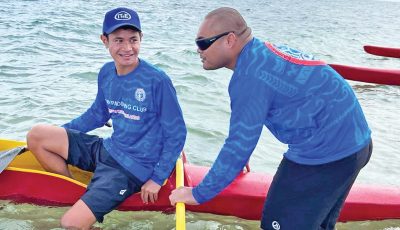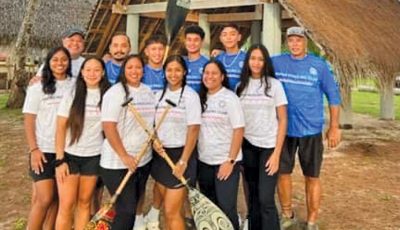Partners unite to enhance Samoa’s cultural and creative industries
APIA, Samoa—The cultural and creative industries in Samoa represent an important economic sector as well as the country’s deep heritage and culture.
The Samoa Bureau of Statistics confirmed that in 2011, almost 30 percent of the country’s population earned some income from handicraft production, just one of the many cultural sectors.
Despite the number of cultural and creative producers in Samoa, there have been few training programs targeting this unique sector with an in-depth, industry-specific curriculum aimed at boosting the livelihoods of producers and supporting economic growth.
To support the development of the cultural and creative industries, the Secretariat of the Pacific Community, the Pacific Islands Forum Secretariat, the European Union, Samoa’s Ministry of Education, Sports and Culture, and the Samoa Arts Council have created a partnership with the Samoan Small Business Enterprise Center to create a targeted training program to boost the nation’s cultural industries.
The first training program was held in Apia from Aug. 3 to 7, with the second session on Aug. 11 to 14. Both trainings were held at the Hotel Elisa in Apia.
The training was made possible by the European Union-ACP supported “Enhancing the Pacific Cultural Industries: Fiji, Samoa and Solomon Islands” project, implemented by SPC’s Social Development Division in collaboration with PIFS, Samoa’s Ministry of Education, Sports and Culture and the Samoa Arts Council.
This training focused specifically on handcraft, fashion and visual art producers, the Deputy Director of SPC’s Social Development Division, Leituala Kuiniselani Toelupe Tago-Elisara, said.
“Through formal presentations and interactive sessions, the training will provide cultural and creative producers with knowledge and skills to enhance their businesses and livelihoods.
“The participants will learn about entrepreneurial and business topics specific to the cultural industries such as quality control, supplier and buyer relationships, distribution channels, marketing strategies and materials, product development and design, and costing and pricing,” Toelupe Tago-Elisara said.
She said that, as part of the partnership, SBEC will integrate the training program into their existing course offerings and repeat it in the future based on demand, ensuring that the knowledge stays local and producers have a resource for advice and technical support.
The success of this partnership is based on the commitment of the partners and the groundwork laid during the National Development Workshop for the Cultural and Creative Industries in Samoa, hosted by SPC, PIFS, MESC and the Samoa Arts Council in November 2014.
Samoa is also home to MENA, one of the region’s most successful high-end, fashion companies with steady sales into the Australian, New Zealand, United States, and Pacific markets. Despite such successes, comprehensive economic statistics on the cultural and creative industries are still hard to come by in the Pacific, despite growing interest from data users.
The UN Conference on Trade and Development reported that the global market for cultural and creative industries topped $624 billion in 2011. (SPC)



























